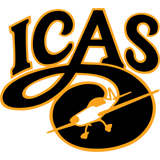|
Chomarat Presents First Industrial Lighter & Stronger Carbon Parts Produced with C-PLY Bi-Angel at JEC Asia
7/19/2012 |
|
|
•For the first time in Asia, CHOMARAT presents the first helicopter part produced by VX Aerospace using C-PLY™ Bi-Angle.
•C-PLY™ Bi-Angle allows exceptional weight savings up to 30% compared to a standard carbon production
•Lighter and stronger parts are produced using thin plies (50-75g/m²) in C-PLY™ Bi-Angle
C-PLY™ BI-ANGLE: A SOLUTION FOR LIGHTER AND STRONGER COMPOSITES IN AERONAUTICSC-PLY™
Bi-Angle is an unbalanced thin ply bi-axial carbon reinforce-ment (non crimp fabric, or NCF). Today, Chomarat presents for the first time in Asia the first trial part made for the aeronautic sector. The helicopter part produced by VX Aerospace, Morganton, NC-USA, takes advantage of both thin ply and bi-angle NCF. The optimized production of such parts leads to additional weight reductions and increased strength, stiffness and toughness compared to previous solutions with plain weave carbon fabric. Further design improvements can be expected during the new ongoing trials. ˝In aeronautics, the thin plies (50-75 g/m²) in C-PLY™ Bi-Angle are a key element in its performance for parts such as aerospace fuselage components. Chomarat is the first to offer industrial manufacturers new possibilities to produce stronger composites parts and up to 30% lighter in weight compared to standard carbon components˝, explains Michel COGNET, CHOMARAT Group Managing Director.
C-PLY™ BI-ANGLE NCF ALSO OFFERS NEW POTENTIALS IN AUTOMOTIVE, THE WIND ENERGY SECTOR AND SPORTS & LEISUREThe ongoing general market demand for weight reduction is related to both environmental and performance requirements worldwide. C-PLY™ Bi-Angle contributes to both weight and com-posite processing cost reductions. It also offers new opportunities for creating unique compo-site applications in different sectors such as Automotive, Wind Energy Components, Sports & Leisure products, tube and pipe products. Chomarat has newly developed materials that offer new potentials using the C-PLY™ Bi-Angle from glass or glass/carbon hybrid, by alternating thin and thick plies at variable angles as low as 20º. Hybridization of composite materials can definitely provide blade composite designers with more design flexibility, to meet new strength and stiffness requirements utilizing lower weight components while achieving lower costs. |
|
Related Exhibition:
|
|
|
 |
|
JEC Asia 2012
|
JEC Asia Composites Show & Conference
6/26/2012 - 6/28/2012
Venue: Suntec Singapore, Singapore, Singapore
|
|
|
|
|
|
|







